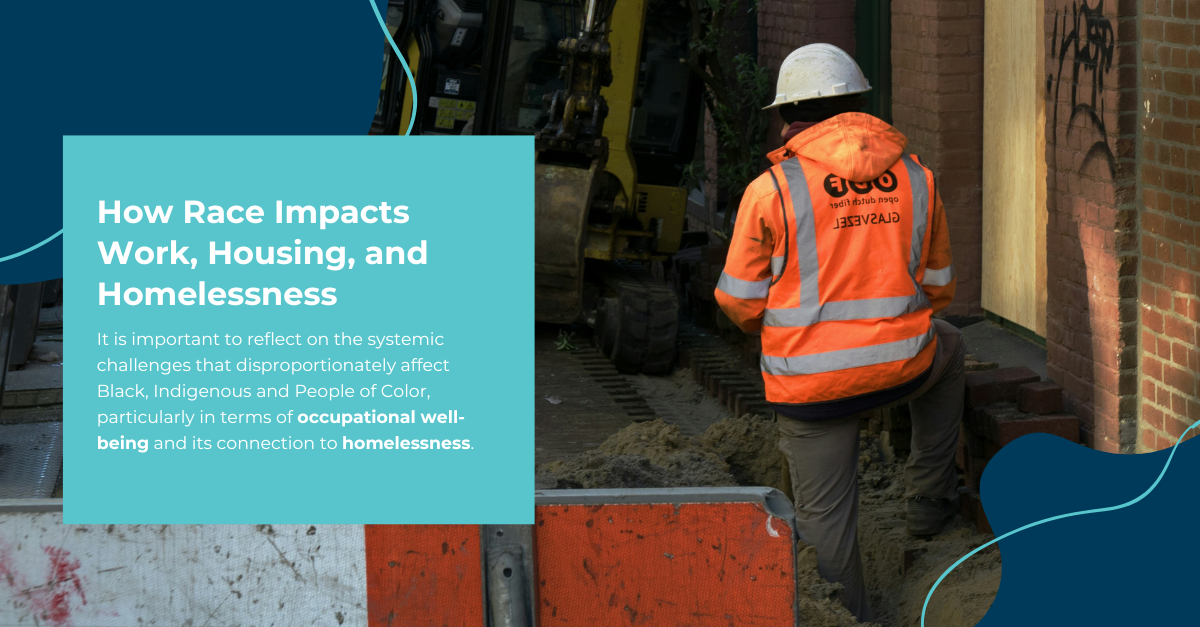How Race Impacts Work, Housing & Homelessness
As we celebrate Hispanic Heritage Month, it's important to reflect on the systemic challenges that disproportionately affect BIPOC (Black, Indigenous and People of Color), particularly in terms of occupational well-being and its connection to homelessness. Understanding these disparities is key to addressing the root causes of homelessness within our community.
Understanding the Problem
Racial Disparities in Chester County
Chester County enjoys high rates of labor force participation and educational attainment, which contribute to its reputation as a prosperous area. With 291,768 out of 425,977 residents participating in the labor force, the county appears to offer robust employment opportunities. Additionally, over 51% of residents hold a bachelor’s degree or higher, which correlates with the high income and managerial occupations prevalent in the region.
However, these overall positive statistics can obscure the economic challenges faced by certain communities within the county. A closer examination reveals that while Chester County's economic conditions are strong, they are not evenly distributed across all populations. According to the Chester County Planning Commission’s Social Equity Map, certain areas in the county have a significant percentage of households with incomes under $25,000. These areas include North Coventry, Spring City, Phoenixville, Coatesville, West Chester, and others. Many of these low-income areas also have higher concentrations of BIPOC (Black, Indigenous, and People of Color) residents when compared to wealthier areas in the county.
Barriers to Employment
The commonly heard refrain, "Why don’t you just go get a job?" oversimplifies the complex challenges faced by people experiencing homelessness. Employment does not automatically end homelessness, and securing a job is often far from simple for those without stable housing. This issue is not just about individual effort but is deeply rooted in systemic failures that limit access to quality education, healthcare, and economic opportunities—failures that disproportionately affect Hispanic and other BIPOC communities.
Even when individuals experiencing homelessness are employed, their incomes are often insufficient to afford housing, especially in areas with high housing costs like Chester County. For instance, a full-time minimum wage worker cannot afford a modest two-bedroom apartment in any state in the U.S., let alone in Chester County. Additionally, racial discrimination further exacerbates the difficulty for Hispanic and other minority groups in finding stable employment. Studies have shown that people of color experiencing homelessness report discrimination across various sectors, including employment, which severely limits their economic mobility.
The Impact of COVID-19
The COVID-19 pandemic has also brought to light the stark disparities in work outcomes for Black and Hispanic Americans. Hispanic workers, often employed in essential roles, faced higher risks of job disruption, stress, and health complications due to the nature of their work and workplace conditions. The pandemic not only exacerbated existing inequities, but also underscored the compounding effects of race, socioeconomic status, and structural racism on occupational well-being.
In addition, reasearch shows that Black and Hispanic workers were disproportionately affected by the pandemic, facing higher rates of job loss, reduced hours, and greater stress. These outcomes are not just the result of the virus itself but are deeply tied to the intersecting factors of race, health status, and economic position. Theories of structural racism and racial capitalism help explain why these communities were hit hardest, revealing the urgent need for policies that address these systemic issues.
Addressing the Challenges
Local Efforts in Chester County
In response to these challenges, the Chester County Workforce Development Board (WDB) is actively working to create a more equitable workforce. The WDB's mission is to develop a workforce that is better equipped to compete in the global economy while addressing local labor market needs. Through strategic planning and collaboration with education, economic development, and organized labor fields, the WDB is working to remove barriers and create opportunities for all residents, including Hispanic and other minority communities.
The Board oversees the administration of approximately $6 million in workforce development funds annually, with a strong focus on local and regional collaboration. This funding supports initiatives aimed at improving job quality, increasing access to education and training, and addressing the specific needs of marginalized populations. The WDB's efforts, in collaboration with other workforce partners, are essential in bridging the gap between employment and housing stability.
Policy and Community Solutions
To effectively address the racial disparities in occupational well-being and homelessness, a comprehensive approach is needed. This approach should include the development and preservation of affordable housing, along with the creation of good jobs that offer fair wages and benefits. Policymakers at all levels must commit to strategies that align housing and employment supports, ensuring that marginalized communities have the resources they need to thrive.
Local Continuums of Care and Workforce Boards, like those in Chester County, are taking steps in this direction by integrating employment assistance into housing programs. These efforts are crucial in helping people secure permanent housing and develop or increase their employment income, ultimately reducing the risk of homelessness.
Conclusion
Hispanic Heritage Month offers a time to celebrate the contributions of Hispanic communities while also acknowledging the systemic barriers they and BIPOC continue to face. By understanding the intersection of race, occupational well-being, and homelessness, we can better address the root causes of these issues and work towards a more equitable future for all residents of Chester County. To learn more about these challenges and potential solutions, we encourage you to explore the resources provided in this post and view the Chester County Workforce Equity Panel discussion.
Resources

